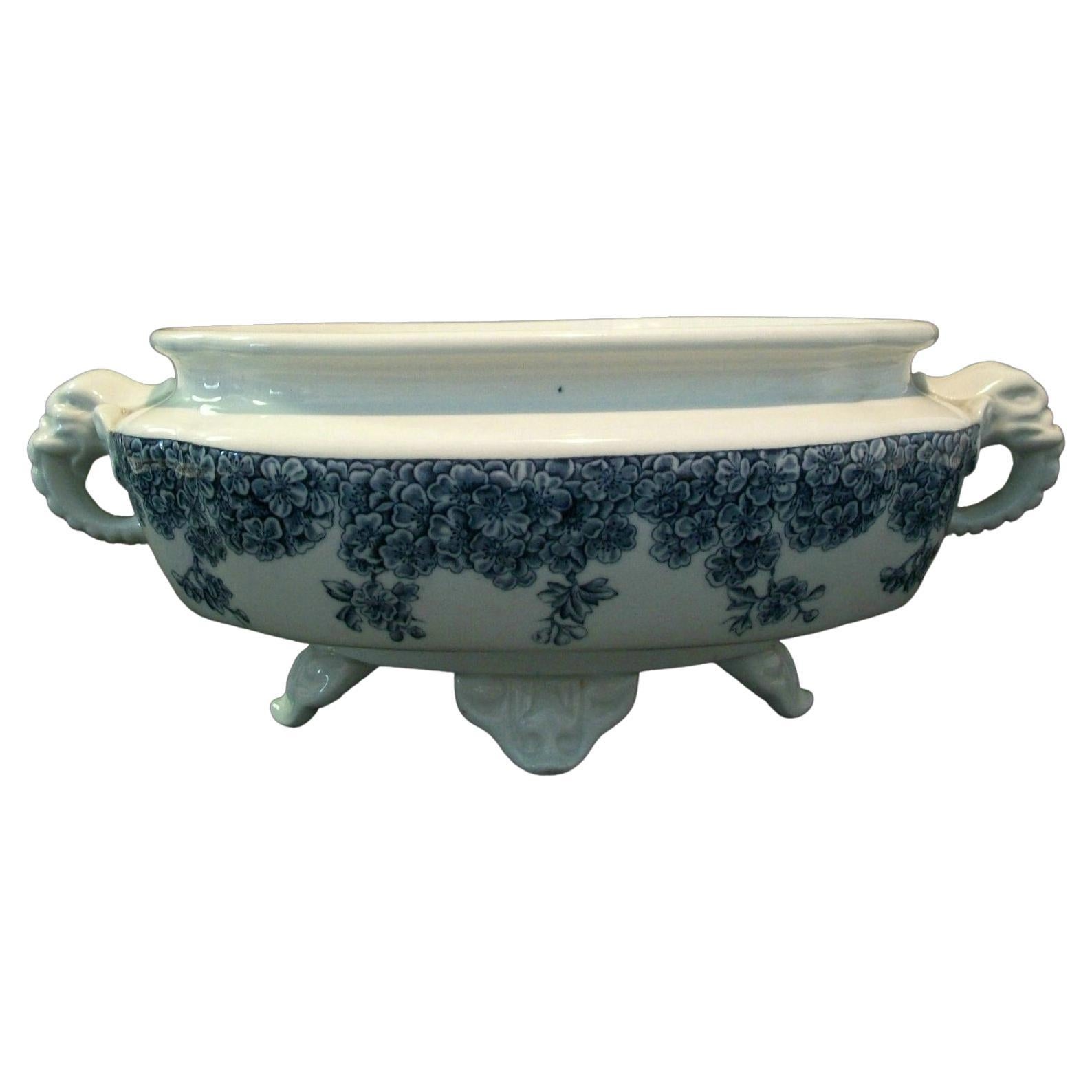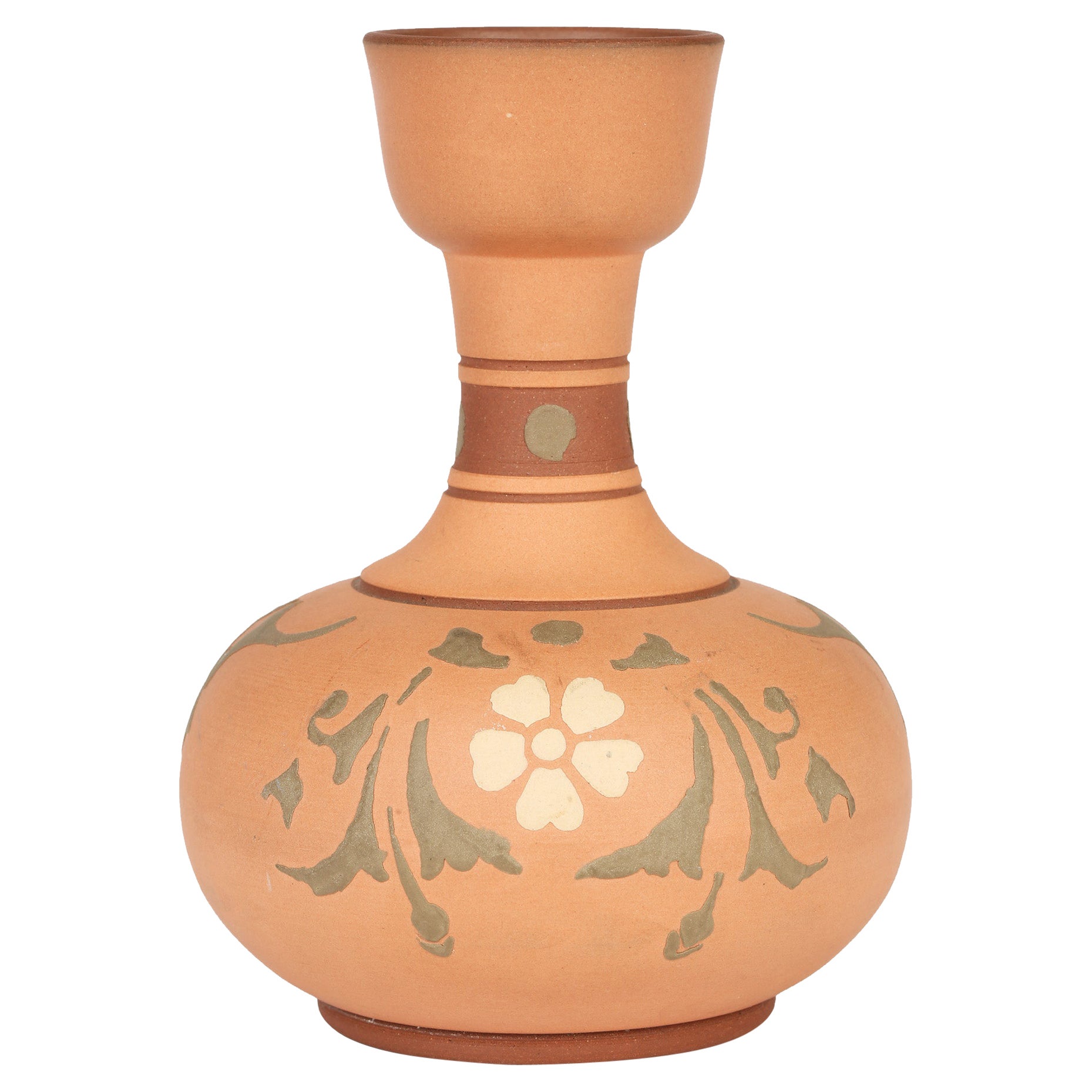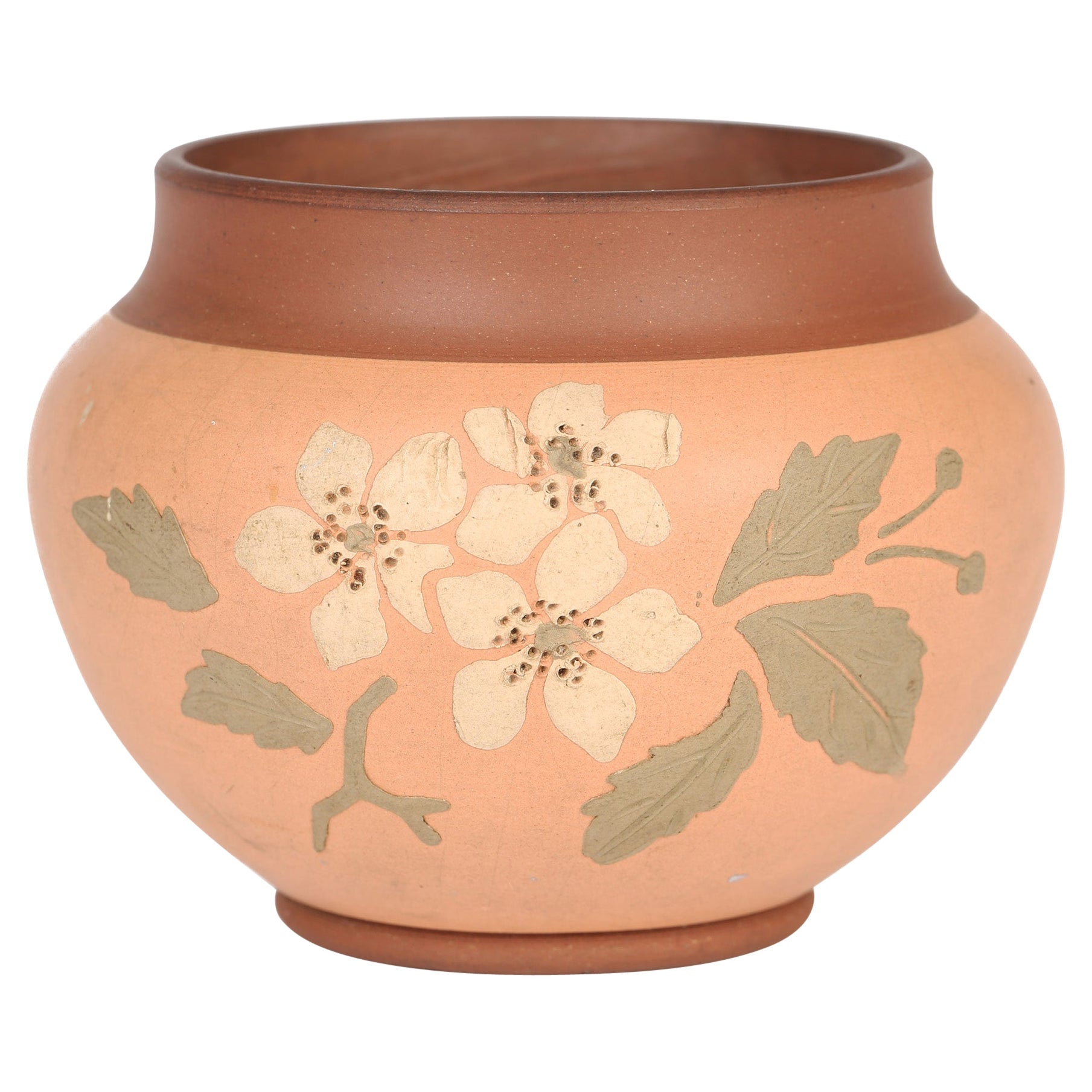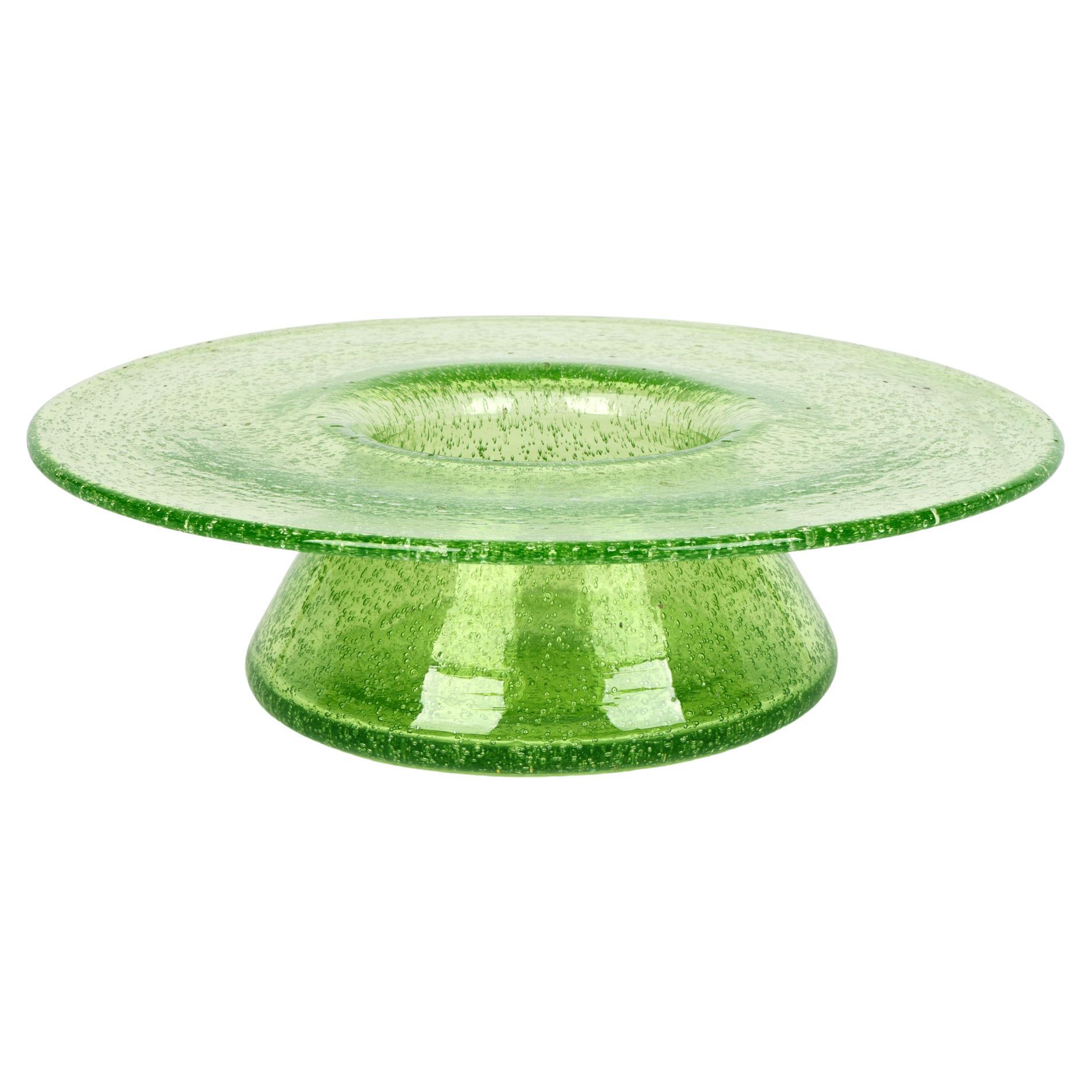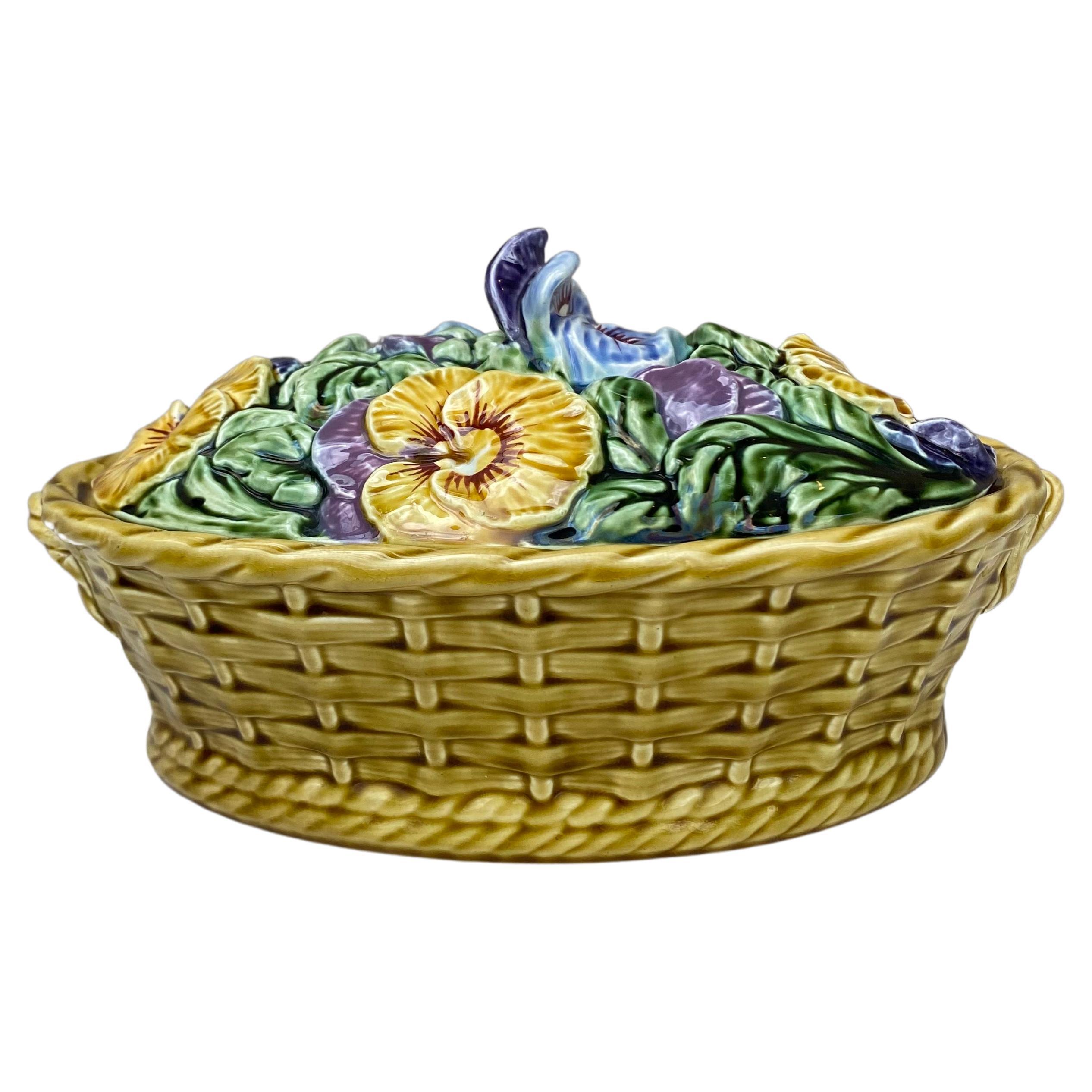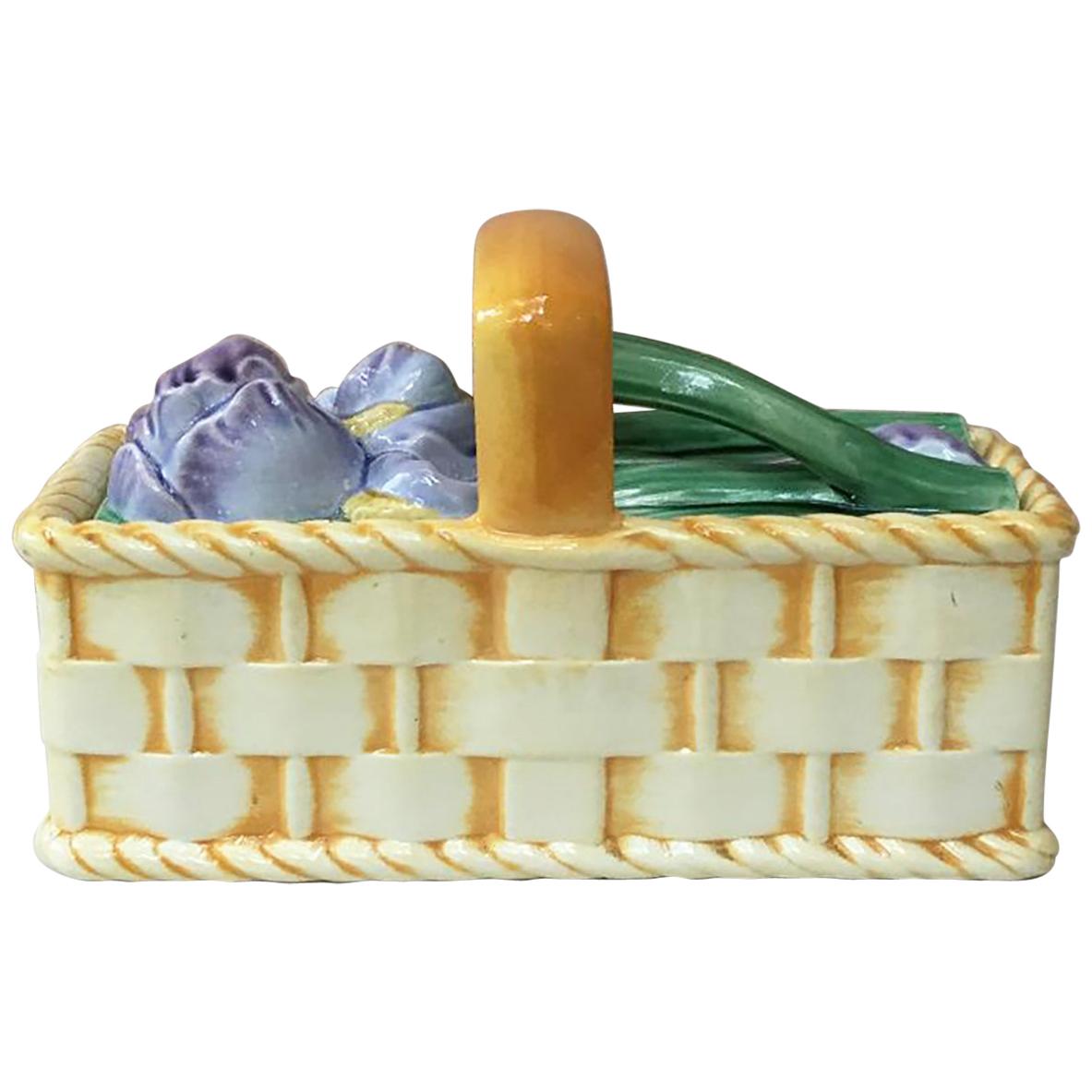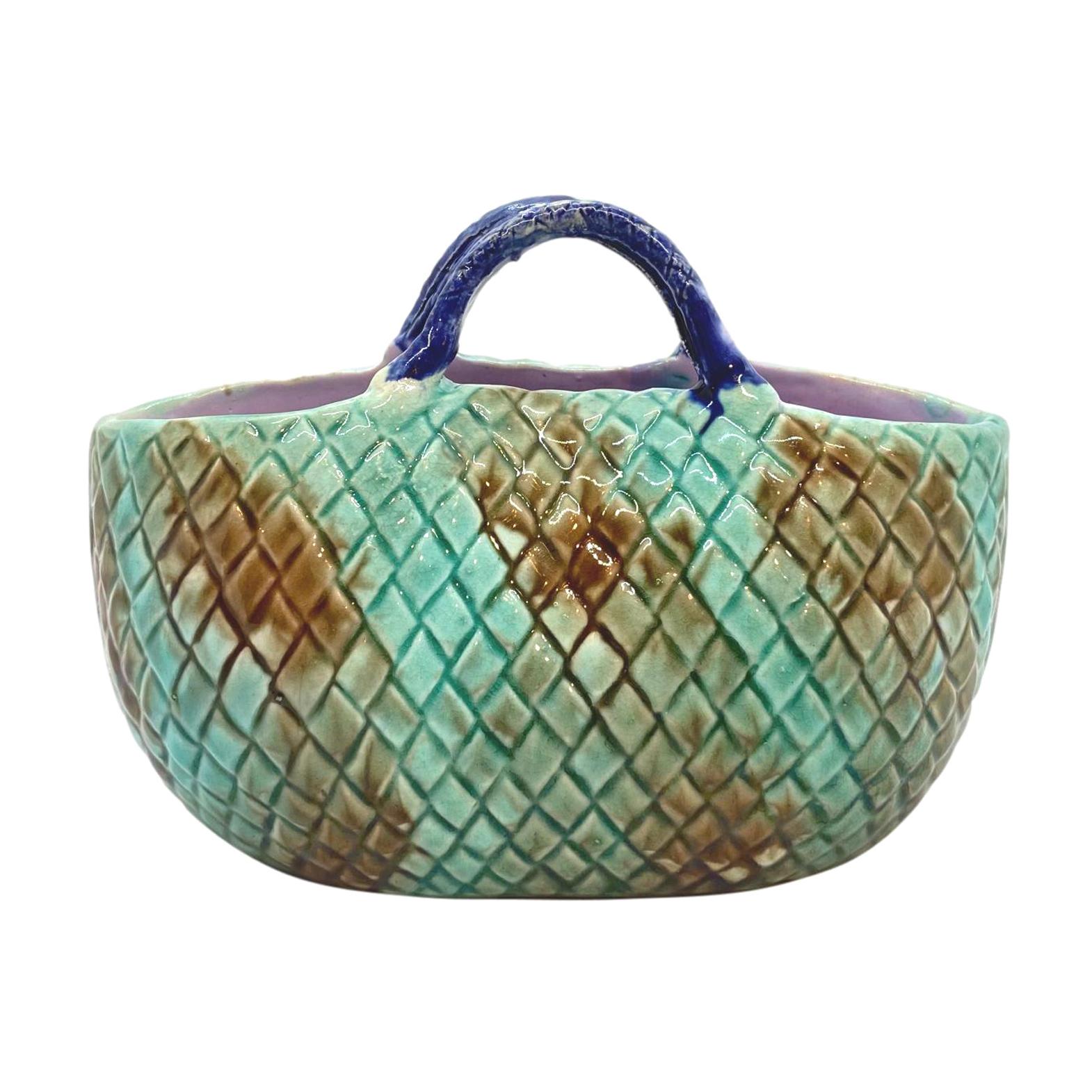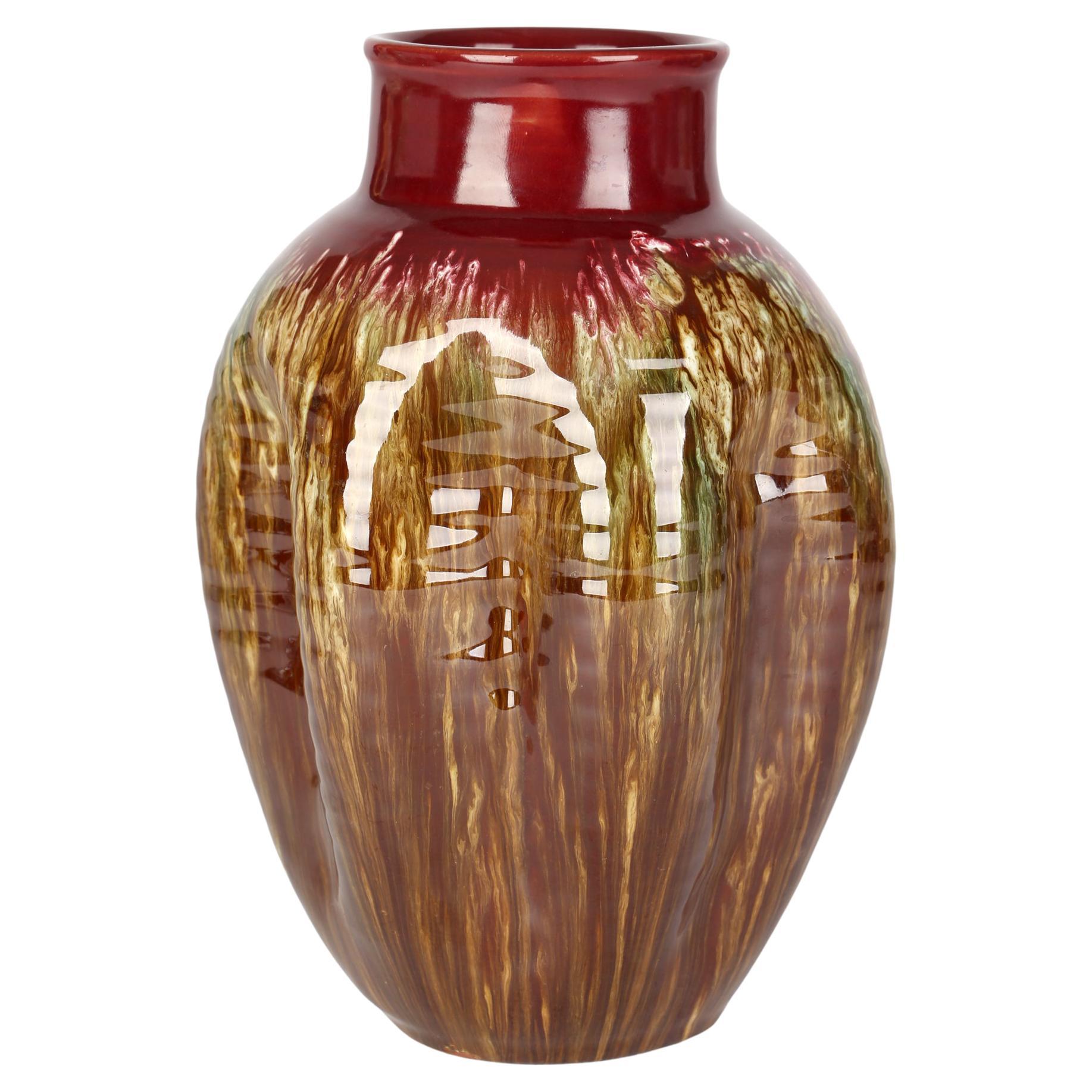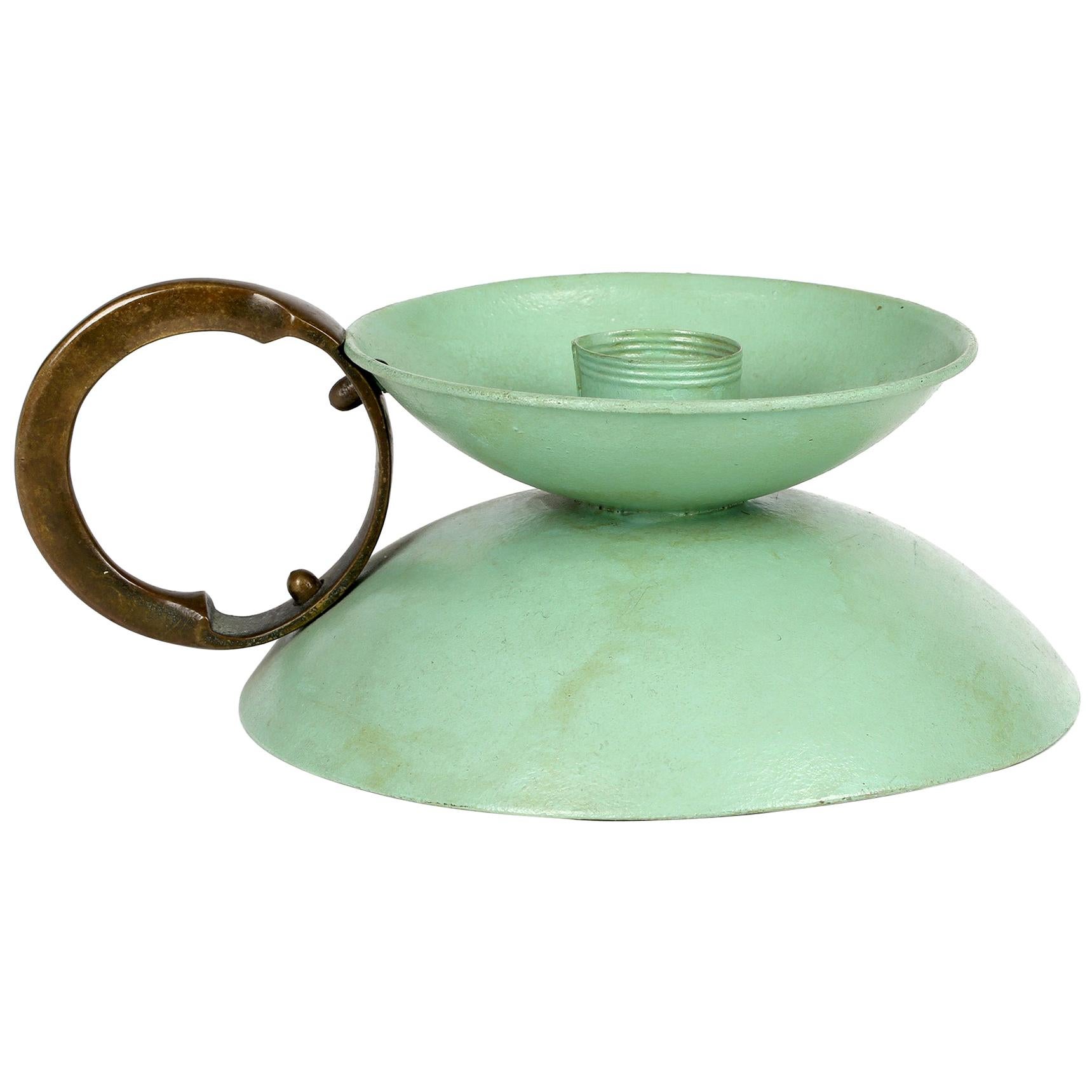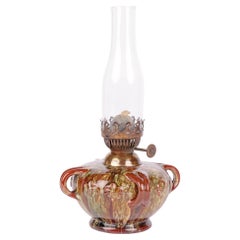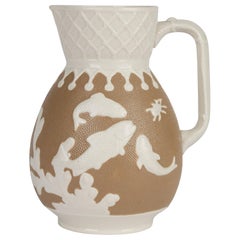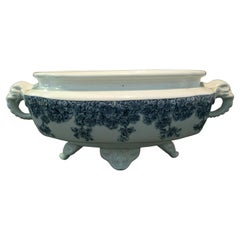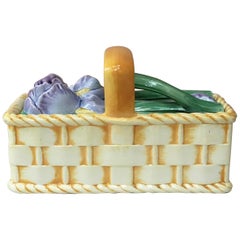
Antique Christopher Dresser for Linthorpe Floral Handled Basket, circa 1885
View Similar Items
Want more images or videos?
Request additional images or videos from the seller
1 of 11
Antique Christopher Dresser for Linthorpe Floral Handled Basket, circa 1885
About the Item
- Creator:Christopher Dresser (Maker)
- Dimensions:Height: 4.34 in (11 cm)Diameter: 2.56 in (6.5 cm)
- Style:Aesthetic Movement (Of the Period)
- Place of Origin:
- Period:
- Date of Manufacture:circa 1885
- Condition:There is some minimal surface wear to the inside of the basket however mentioned for absolute accuracy only.
- Seller Location:Bishop's Stortford, GB
- Reference Number:Seller: DA14080551stDibs: LU132822381192
About the Seller
5.0
Platinum Seller
These expertly vetted sellers are 1stDibs' most experienced sellers and are rated highest by our customers.
Established in 2009
1stDibs seller since 2015
1,175 sales on 1stDibs
Typical response time: 3 hours
Associations
LAPADA - The Association of Arts & Antiques DealersInternational Confederation of Art and Antique Dealers' Associations
More From This SellerView All
- Christopher Dresser for Linthorpe Loop Handled Art Pottery Oil LampBy Christopher DresserLocated in Bishop's Stortford, HertfordshireAn unusual English Arts & Crafts pottery loop handled oil lamp the design attributed to renowned British designer Christopher Dresser (British, 1834-1904) and made by Linthorpe and d...Category
Antique 1880s English Arts and Crafts Table Lamps
MaterialsBrass
- Christopher Dresser for William Brownfield Aesthetic Movement Japanesque JugBy Christopher DresserLocated in Bishop's Stortford, HertfordshireAn exceptional and scarce William Brownfield Aesthetic Movement porcelain jug decorated in the Japanesque taste by Christopher Dresser and dated 1878. This very finely made jug is de...Category
Antique 1870s English Aesthetic Movement Ceramics
MaterialsCeramic
- Christopher Dresser Attributed Aesthetic Movement Terracotta VaseBy Christopher DresserLocated in Bishop's Stortford, HertfordshireA very stylish aesthetic movement terracotta vase with slip applied floral designs in the manner of Watcombe and design attributed to Christopher Dresser dating from around 1880. Thi...Category
Antique Late 19th Century English Aesthetic Movement Vases
MaterialsTerracotta
- Christopher Dresser Attributed Aesthetic Movement Terracotta BowlBy Christopher DresserLocated in Bishop's Stortford, HertfordshireA very stylish aesthetic movement terracotta bowl with slip applied floral designs in the manner of Watcombe and design attributed to Christopher Dresser dating from around 1880. Thi...Category
Antique Late 19th Century English Aesthetic Movement Decorative Bowls
MaterialsTerracotta
- Christopher Dresser for Thomas Webb Large ‘Clutha’ Art Glass BowlBy Christopher DresserLocated in Bishop's Stortford, HertfordshireA large Arts & Crafts ‘Clutha’ art glass bowl designed by Christopher Dresser (British, 1834-1904) attributed to Thomas Webb and dated 1879. The bowl is of distinctive wide rounded s...Category
Antique 1870s English Arts and Crafts Decorative Bowls
MaterialsBlown Glass
- Christopher Dresser Linthorpe Pinched Streak Glazed Art Pottery VaseBy Christopher DresserLocated in Bishop's Stortford, HertfordshireA stylish Aesthetic Movement Linthorpe attributed vase with drip glazed pinched body by Christopher Dresser (British, 1834-1904) dating from around 1885. The red earthenware hand thr...Category
Antique 1890s English Arts and Crafts Vases
MaterialsPottery
You May Also Like
- Royal Worcester, DR. CHR. Dresser, Elephant Handled Tureen, U.K., circa 1888By Christopher Dresser, Royal WorcesterLocated in Chatham, ONRoyal Worcester - Dr. Christopher Dresser (Attributed) - Antique English blue and white transfer decorated twin handled porcelain center...Category
Antique Late 19th Century British Aesthetic Movement Decorative Bowls
MaterialsCeramic
- Majolica Pansies Basket Sarreguemines, circa 1920By SarregueminesLocated in Austin, TXLarge Oval Majolica basket with pansies flowers signed Sarreguemines, circa 1920.Category
Vintage 1920s French Art Nouveau Decorative Baskets
MaterialsCeramic, Faience, Majolica, Pottery
- Majolica Iris Basket Sarreguemines, circa 1920By SarregueminesLocated in Austin, TXLarge Majolica basket with iris flowers signed Sarreguemines, circa 1920.Category
Vintage 1920s French Art Nouveau Decorative Baskets
MaterialsCeramic, Faience
- French White Reticulated Grapes Basket, circa 1900Located in Austin, TXFrench white faience grapes-motif reticulated handled basket, circa 1900.Category
Antique Early 1900s French Romantic Decorative Baskets
MaterialsFaience
- English Majolica Basket Mottled Green Cobalt Handle Lavender Interior, ca. 1875Located in Banner Elk, NCEnglish Majolica basket with mottled green basketweave, a cobalt blue handle, and lavender interior, ca. 1875, Measures: W 6 x H 4 x D 1.5 inches For 30 years we have been among th...Category
Antique 19th Century English Victorian Decorative Baskets
MaterialsMajolica
- Two Pairs of Italian Maiolica Baskets, circa 1780By Antonio FerrettiLocated in Milano, ITTwo pairs of maiolica baskets Antonio Ferretti Manufacture Lodi, circa 1770-1790 Maiolica polychrome decorated “a piccolo fuoco” (third fire). Measures: A) Height 3.54 x 6.69 x 9.84 in (9 x 17 x 25 cm); B) Height 3.93 x 7.48 x 11.02 in (10 x 19 x 28 cm). Total weight 4.85 lb (2.200 kg) State of conservation: A) One of the smaller baskets has some areas of restoration, the other slight chipping from use; B) One of the larger baskets is intact and the other shows a clearly glued break. The mold with which the baskets were forged simulates a wicker weave. The two larger works have high, vertical walls, with branch-shaped handles penetrating the weave. The painted decorations, small polychrome flowers applied only externally, highlight the points where the weaves intersect. The decision to leave the center of the basket devoid of decoration is highly unusual, but given the size and complexity of the shape, as well as the quality of the enamel, it is possible to hypothesize that it represents a precise choice in manufacturing or for a particular client. The two smaller baskets have small, twisted handles and, on the outside, reproduce more decisively the characteristic wicker weave, obtained through thin molded lines. The interior exhibits a rich, typical decoration of naturalistic flowers: a bunch centered around a main flower and secondary stems accompanied by small “semis”. The exterior of these works is also adorned with small little flowers where the weaves intersect. The size and morphological characteristics of the baskets confirm their attribution to the Lodi factory of Antonio Ferretti between 1770 and 1790, during its most successful period; by this point his original reworking of the "Strasbourg" decoration, known as "old Lodi", had achieved great fame even outside Italy. This decorative choice represented a strong point of the Lodi factory, which established itself thanks to the vivid nature of the colors made possible by the introduction of a new technique perfected by Paul Hannong in Strasbourg and which Antonio Ferretti introduced in Italy. This production process, called “piccolo fuoco” (third fire), allowed the use of a greater number of colors than in the past; in particular, the purple of Cassius, a red made from gold chloride, was introduced. Its use allowed for many more tones and shades, from pink to purple. The Ferretti family had started their maiolica manufacturing business in Lodi in 1725. The forefather Simpliciano had started the business by purchasing an ancient furnace in 1725 and, indeed, we have evidence of the full activity of the furnaces from April of the same year (Novasconi-Ferrari-Corvi, 1964, p. 26 n. 4). Simpliciano had started a production of excellence also thanks to the ownership of clay quarries in Stradella, not far from Pavia. The production was so successful that in 1726 a decree of the Turin Chamber came to prohibit the importation of foreign ceramics, especially from Lodi, to protect internal production (G. Lise, La ceramica a Lodi, Lodi 1981, p. 59). In its initial stages, the manufacture produced maolicas painted with the “a gran fuoco” (double fire) technique, often in turquoise monochrome, with ornamentation derived from compositional modules in vogue in Rouen in France. This was also thanks to the collaboration of painters like Giorgio Giacinto Rossetti, who placed his name on the best specimens next to the initials of the factory. In 1748 Simpliciano made his will (Gelmini, 1995, p. 30) appointing his son Giuseppe Antonio (known as Antonio) as universal heir. After 1750, when Simpliciano passed away, Antonio was directly involved in the maiolica factory, increasing its fortunes and achieving a reputation on a European level. Particularly important was the aforementioned introduction in 1760 of the innovative “a piccolo fuoco” (third fire) processing, which, expanding the ornamental repertoire with Saxon-inspired floral themes, could commercially compete with the German porcelains that had one of its most renowned offerings in the naturalistic Deutsche Blumen. Antonio Ferretti understood and promoted this technique and this decoration, proposing it in a fresher and more corrective version, less linked to botanical tables...Category
Antique 1770s Italian Neoclassical Ceramics
MaterialsMaiolica
